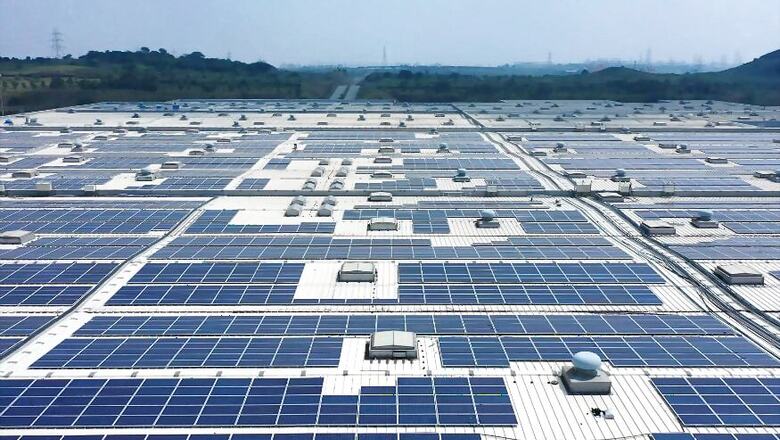As India Scales up Renewables, Should Projects Face More Green Scrutiny? New Report Raises Questions

views
At a time when renewables have surged ahead of coal and other fossil fuels in the pace of power capacity addition, do large renewable projects require finer environmental and social impact scrutiny? A new report has raised questions on this issue after analyzing the environmental and land acquisition regulations of the central government and of seven states that lead installation of renewable power capacity.
These seven states -- Rajasthan, Gujarat, Maharashtra, Andhra Pradesh, Telangana, Karnataka and Tamil Nadu -- account for more than 80% (50.88GW) of the total installed RE capacity in the country.
The report’s analysis showed that with no environment impact assessment (EIA) report mandated for solar and wind power projects of all sizes, they are exempt from seeking an environmental clearance but have to obtain approvals from pollution control boards. They also need to obtain approvals from state water resource departments or Central Ground Water Board for use of surface water and groundwater, respectively. However, the analysis also found that there is no uniformity across states with regards to environmental and land acquisition norms.
The report, ‘Powering Ahead’, has been prepared by ASAR, a development startup working on issues related to environment and social justice. The report was prepared in collaboration with The Heinrich Böll Stiftung, a green think-tank that is part of the green political movement.
The report looked at the environmental and land resources required for renewable energy projects and also talked about two existing projects, a wind farm in Maharashtra and a solar power project in Karnataka, that were examined on site.
For instance, the report stated that an average solar power plant required about 5-8 acres of land per megawatts, inclusive of space for the power generation system, evacuation line and subsidiary activities. These plants also need thousands of litres of freshwater per MW to clean the solar panels, however, their freshwater requirement is drastically less compared to that of a thermal power plant.
“Small solar projects of 20–25 MW need 100–200 acres of land, while larger projects like solar parks of 100 to 300 MW need 500 to 2400 acres,” the report said. The report advocated for a regional assessment of available water resources in regions that are most favourable for solar projects.
The report pointed out that many large-scale renewable projects are proposed in water stressed regions such as western Rajasthan, western Gujarat, Vidarbha and north-eastern Karnataka. “To avoid total depletion of a region’s groundwater, a regional assessment of available water resources must be done. This should cover mapping of surface and groundwater availability, its longevity, competition for access, and utilisation plans including reuse and recycling of water,” the report stated.
India has aggressively ramped up its solar ambition from 20 GW to 100 GW by 2022. The wind energy target has been revised to 60 GW, and the overall renewable energy target for 2022 has been set at 175 GW. The National Electricity Plan 2018 aims to achieve 275 GW by 2027.
The report also recommended mandatory environment and social impact assessments in the case of large-scale renewables in order to allow the people to register their opinions and to fine tune the project as per local needs.
“Wind farms have a clear ecological impact, whether it is bird hits or forest diversion , whereas solar projects face land issues. Zonation is important for wind power projects,” said Chandra Bhushan, CEO, International Forum for Environment, Sustainability and Technology.
As per the report, a total of 612.51 hectares of forest land was diverted for wind projects between 2014 and 2018 and 375.33 hectares of forest land was proposed to be diverted for 128 small hydro power projects in the same period.
“There is absolutely no doubt that renewables have much less environmental and social impact compared to fossil fuel based energy. This report does not question the role of large-scale renewable energy in ensuring energy transition as the country is looking for just and democratic energy transition. This would be possible only if the social and environmental impacts of these projects are documented and are put out for public scrutiny,” said Abhishek Pratap, Senior Researcher, ASAR and one of the co-authors of the report.




















Comments
0 comment